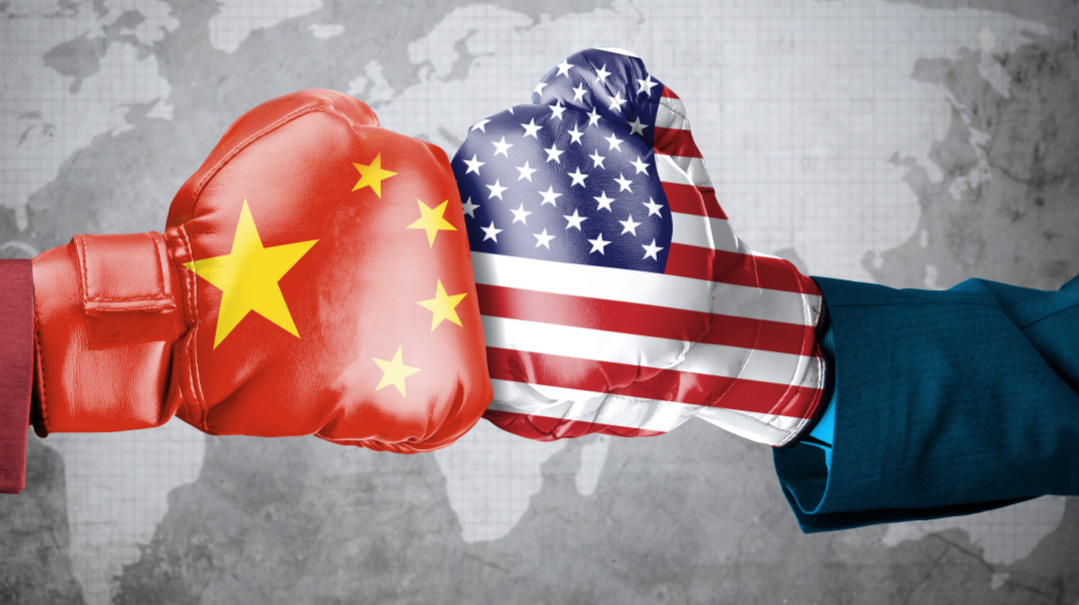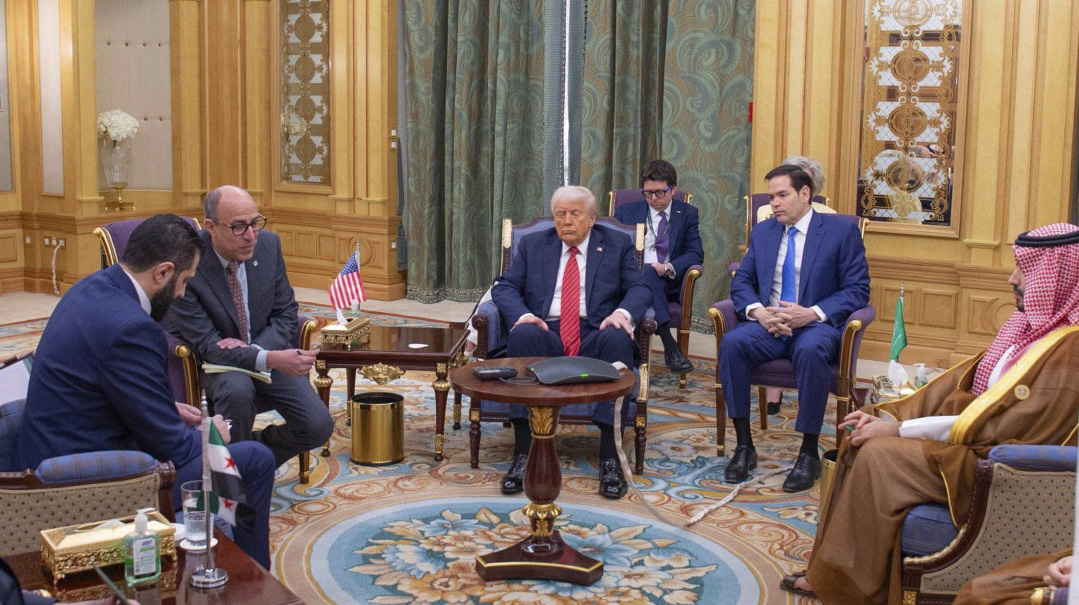Tariff Tussle: A Few Minutes with… Economist Timothy Fitzgerald
| February 11, 2025Mr. Fitzgerald shared his views with Mishpacha on the administration’s tariff goals

President Donald Trump has showed a ready willingness to use tariffs to win foreign trade battles and achieve domestic policy goals. Over the objections of economists who warn that triggering trade wars will drive up prices and stunt economic growth, Trump has called the tariff “the most beautiful word in the English language.”
Last week, the White House announced 25% tariffs on goods from Mexico and Canada and 10% on Chinese goods. America’s neighbors to the north and south got a one-month reprieve after they agreed to implement stronger border security measures. Yet the threat remains, and the administration says it is formulating a set of further-reaching tariffs aimed at readjusting America’s long-running trade deficit. American businesses are bracing themselves for the impact of the tariffs in an already-vulnerable economy.
Timothy Fitzgerald served as chief international economist on the White House Council of Economic Advisors during the first Trump administration. He was charged with the administration’s analysis of foreign trade and gained a keen understanding of the market outlooks of President Donald Trump and his closest advisors. Presently, Mr. Fitzgerald is an associate professor in economics at the Rawls College of Business at Texas Tech University and chair of the Commodity Futures Trade Commission’s Energy and Environmental Markets Advisory Committee.
Mr. Fitzgerald shared his views with Mishpacha on the administration’s tariff goals and parts of their plans mainstream reports might be overlooking.
Many of the news reports and economic forecasts on tariffs warn of the impact on consumer prices, intimating criticism of a president whose campaign pledged to address inflation. Is there an alternative narrative that challenges the inflationary effects of tariffs?
Tariffs are not necessarily inflationary, but they are designed to make an imported product more expensive relative to a non-imported product. Whether or not that leads to a continual increase in the price level depends on a lot of things.
There’s a strain of thinking that suggests this is just going to be a one-time adjustment, and you could think of it as effectively leveling the playing field. That is, they make the imports more expensive but don’t affect overall prices.
How serious of an issue are trade deficits with Mexico and Canada for America’s economy?
I don’t worry about a trade deficit with Canada. It’s very small as a percentage of trade, and the deficit is also quite small. Since the 1980s, we’ve had a very robust, effectively free-trade relationship with Canada, and which county benefits more has consistently shifted back and forth. There are some structural drivers in our economy that mean we’re going to have an overall trade deficit, but I don’t think Canada trade is a problematic part of that.
We also have a small deficit with Mexico, and there’s more reason to think about that, because the nature of our trading relationship there changed in the last five to ten years, and certainly in the 30 years since we signed the North American Free Trade Agreement [NAFTA].
The public understands the concessions the Trump administration wants from Mexico, but there is less clarity about what the goals are with Canada.
The White House has been strategically vague about what they want.
One of the issues that’s been important to the president for a long time is the automobile industry, which for decades has been deeply integrated across the US-Canadian border. In some cases, we’re shipping components or sub-assemblies back and forth multiple times to take advantage of specialties on either side.
The president, in my experience with him, does not believe that that is a good economic choice. He would prefer everything manufactured for the domestic automobile industry to be made in the United States. Auto production is one example, but I think the president and his advisors are interested in improving economic outcomes across a range of industries and regions. Besides that, they put a lot of importance on trade deficit measures, which is not a view shared by most or nearly all professional economists.
There are other issues going on as well. The administration’s public statements say they want cooperation on immigration and drugs. Now, using tariffs or other economic tools for that is very unusual, which might be part of the source of this public confusion.
President Trump spoke about trade deficits in 2016, but his first administration took less action about it than it seems ready to undertake now. What do you think drives that shift?
When I served in the White House, there was an active debate between two camps on economics — those who leaned more toward free trade, and those who leaned more toward protectionism. From my vantage point now, I see a change in personnel —the voices advising against fixating on trade deficits are gone, and they’ve been replaced by people who are much happier with that kind of posturing.
I’m not behind the scenes, so I don’t want to say there’s nobody representing more traditional views, because there may well be. But from where I sit, I can say that a lot of the people who were advocating for more free trade ideas in the previous Trump administration are gone.
Do you think the divide between the Trump administration’s view on trade and that of economists is driven by a general disparity on the importance of domestic manufacturing?
That’s part of what’s going on. There has been a movement in economics for the past quarter century to look at how policy affects different segments of the population differently.
Politicians are particularly receptive to those kinds of results, because they naturally think about the world through lenses of their voter constituencies. That makes them give more weight to a smaller population, like manufacturing workers, who are not a large part of the US economy.
There are maybe a few hundred thousand steelworkers, but they’re a charismatic industry that people care about, and they tend to live in places that are politically important, like Pennsylvania and Ohio. Same goes for the auto industry’s footprint in Michigan. That creates a tension with the broader outlook economists tend to take.
Do you think Vice President J.D. Vance has influenced the administration’s direction? His views of domestic production are driven by how sending industries overseas impacts communities and society as a whole.
I certainly think that plays a role. J.D. Vance latched onto a particular vision for a future economy that embraces interventionist trade policy in pursuit of not just economic objectives but also social ones. The vice president has a lot of influence, and he views these matters quite differently than Mike Pence did.
Most economists don’t think about working toward a social goal.
The president campaigned on imposing 60% tariffs on China. Why do you think the White House lowered its sights to 10%?
China is still our third-largest trading partner. Now, our relationship with China has been changing over the past eight years, since Trump’s first administration, but I think there was a recognition that a massive 60% tariff would create an undesirable shock to the economy. Their ultimate target could still be 60%, but they might want to work toward it incrementally. Or it could just be an unrealistic thing politicians say on the campaign trail.
The tariffs threatened against Canada and Mexico are not the type that President Trump campaigned on, geared toward boosting domestic production. What would that tariff regime look like?
If you’re looking to transform American manufacturing using only tariffs, that’s going to be a heavier lift than if tariffs are part of a more integrated slate of policy decisions.
The tariffs that have been on the table so far are all bilateral tariffs — that is, on specific trading partners. Tariffs that could be a tool to increase domestic production would be multilateral, which would put a blanket fee on imports from all countries. That could be a powerful tool.
Even if the tariffs threats we’ve seen so far are mostly negotiating tactics, they could also be intended as messages to other countries that they should change their polices before they get hit with tariffs.
Why does the administration seem hesitant to impose blanket tariffs and follow through on its promises to the US manufacturing sector?
When you talk about multilateral tariffs, another dimension opens up, which is using them as revenue generator.
It appears to me that Congress and the White House haven’t really got down to brass tacks on negotiating budgetary reconciliation issues and the finer points of their tax plan yet. Once they do that and have a better picture of how big the shortfall those tax cuts will leave will be, that would be the ideal time to talk about how much money needs to be raised by tariffs to fill the gap.
As the administration weathers criticism of its tariff moves, is there a viewpoint that you gleaned from working with the president that could help frame his approach?
One of President Trump’s strengths is that he is willing to be unconventional, and that keeps the people he is dealing with on their toes. When you work with him, you see that he is willing to use tools that perhaps some people thought were outdated or defunct. But he mobilizes them in unconventional ways.
That comes with potential gains, and it comes with some complications and costs.
I think a way to put that into focus is to look at China.
When Trump ran the first time, he spoke a lot about the bilateral trading relationship with China, and he was a man on an island. In 2015–16, when he called out the leadership in the Chinese Communist Party for pursuing policies that created substantial costs for trading partners and some distortions to the global trading system, it was way out there.
Today, there’s not only bipartisan consensus in the United States about the adverse effect of Chinese economic policies, there is a growing global consensus as well.
That doesn’t mean every unconventional idea the Trump administration has is a good one. You have to look at each one’s merits. But if you want to understand where the administration is coming from, it’s a helpful perspective.
(Originally featured in Mishpacha, Issue 1049)
Oops! We could not locate your form.







